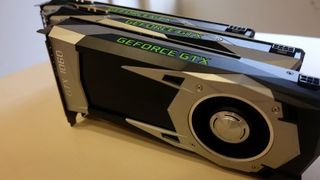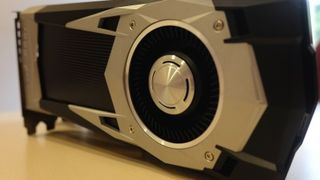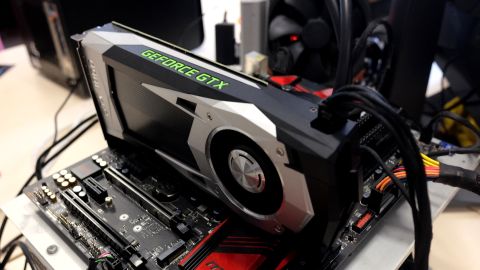Why you can trust TechRadar
So, SLI has gone out of the window then. But how does the GTX 1060 perform on its own? Does it match up to Nvidia's statement, can it outperform the prestige of the GTX 980? In our testing the answer is a resounding yes. We snuck in the 6GB Founder's Edition into the lab for testing, and it was impressive.
From the get go this little beauty racked up an impressive final GPU clock speed of 1911 MHz thanks to GPU Boost 2.0, 203 MHz higher than Nvidia's conservative estimate. In our 1080p testing we saw average frame rates ranging from 36 fps to 38 fps in Total War: Attila, Rise of the Tomb Raider and Ashes of the Singularity, while both Far Cry Primal and The Division scored well above that 60 fps sweet spot.
The GTX 980 on the other hand did average a little higher at this resolution, netting a respectable 38 - 41 average frames per second in Total War, Tomb Raider and Ashes, with one frame lower results in both The Division and Far Cry Primal.

Quad damage
At 1440p it's a similar story with both the GTX 1060 and 980 trading blows all day long. Far Cry Primal and The Division scoring 45 and 41 average frames per second respectively, and 23 to 30 frames per second in Total War, Tomb Raider and Ashes of the Singularity at DX12.

It's important to bear in mind at this point that all of our titles are benchmarked on the absolute maximum settings possible. Attila is notorious for being particularly graphically intensive, alongside Rise of the Tomb Raider. Couple that with an overall lower system power draw of 225 watts versus the GTX 980's 237 and it almost seems like an absolute victory. Almost.
Overclocking and thermals
So then, the Founder's Edition still follows that traditional blower style shroud that most reference cards are so fond of. This one in particular is somewhat of a stripped down variant of the more prestigious GTX 1070+ versions. Although, at least it isn't as black as the previous reference x60 series cards. It's quiet even at higher loads, considerably more than the competition, keeps the card cool, and helps ensure GPU boost has the leverage to increase clock speeds without worry.
Considering the card only has a 120W TDP and a single six pin the overall overclocking was an enjoyable experience. Impressively like the rest of its Pascalian brothers the GTX 1060 is one hell of an overclocker.

With a 50% increase in voltage, plus 250 MHz on the GPU, and 325 MHz on the memory we managed a final core clock of 2,151 MHz on the core and 8.664 MHz on the memory. With aftermarket cards fast approaching, it's likely we'll see improvements on that, and the GPU boost scores, which are already remarkably high in contrast to the last generation.
If Pascal has shown us anything, it's that we're finally hitting that 2 GHz mark for graphics processors permanently, certainly for team green. Overall this increases our Firestrike score by just shy of 1,100 points, which is the equivalent of upgrading from Intel Core i3 to a Core i5, or the midway point between a GTX 1070 and 1080. Is it a huge performance gain? Not immensely, you can expect to gain around 4 to 5 fps depending on the title, but free performance is free, so why wouldn't you?

